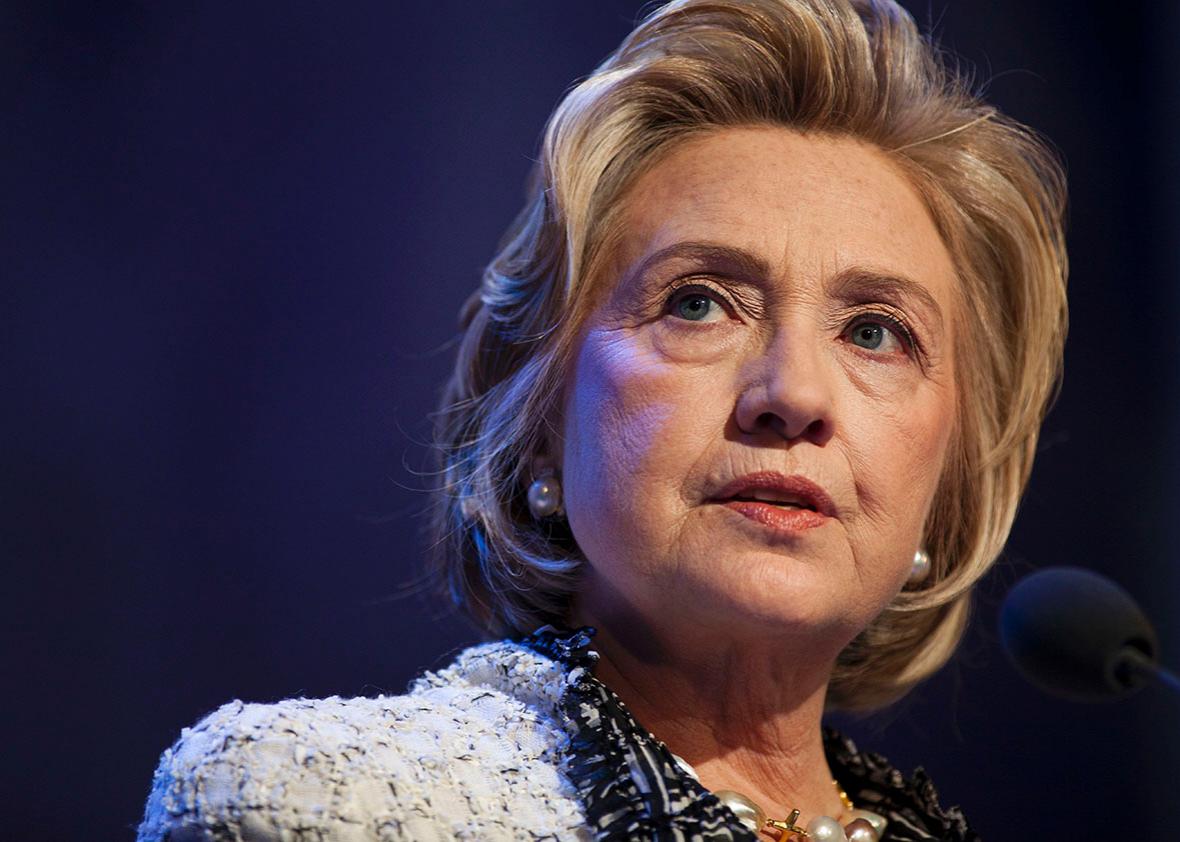Has Hillary Clinton just collapsed as a general election candidate? Judging from the most recent polls, the answer is yes. That is, if you ignore all the lessons of the last presidential election.
On Wednesday, Quinnipiac University released “swing state polls” in Colorado, Iowa, and Virginia. Far from leading or running even, Clinton was far behind her Republican rivals. Against Marco Rubio, she trailed 8 points in Colorado (38 percent to 46 percent), 8 points in Iowa (36 percent to 44 percent), and 2 points in Virginia (41 percent to 43 percent).
Versus Jeb Bush, she trailed 5 points in Colorado (36 percent to 41 percent), 6 points in Iowa (36 percent to 42 percent), and 3 points in Virginia (39 percent to 42 percent). And matched up with Scott Walker, she trailed 9 points in Colorado (38 percent to 47 percent), 8 points in Iowa (37 percent to 45 percent), and 3 points in Virginia (40 percent to 43 percent).
Driving this decline are terrible numbers on honesty and trustworthiness. In each state, solid majorities—62 percent in Colorado, 59 percent in Iowa, and 55 percent in Virginia—say that the former secretary of state is neither honest nor trustworthy. Smaller, but still substantial majorities say she doesn’t care about their “needs and problems.” On all scores, Clinton is outperformed by Democratic primary competitor Sen. Bernie Sanders and Vice President Joe Biden, who isn’t in the race.
There’s no denying that Clinton is among the most polarizing figures in American politics, with staunch opposition from almost every Republican in the country. Add modest Democratic discontent—evidenced by the surprising popularity of Sanders—a series of highly publicized scandals, and Clinton’s legitimate problems with secrecy, and you have a recipe for her low ratings.
But that, I think, is as far as we can go. Beyond a few generalities about Clinton’s present media narrative and the overall landscape of the race, these polls just don’t tell us much. If anything, the breathless media coverage of the results is a good reminder of how not to interpret polls and what everyone should have learned from coverage of the 2012 presidential election.
The big thing is that this early in an election cycle, polls don’t tell us anything. They aren’t predictive or especially useful. For example, at roughly this point in 2011, Barack Obama was a goner. With a net negative job approval rating, he was behind in key swing states and losing to a generic Republican in a nationwide matchup. But the election came, and the picture changed: Discontented Democrats returned to his corner, and the race tightened to a virtual tossup. With economic growth on his side, Barack Obama won, with a victory that matched those fundamentals.
With that said, if you’re going to pay attention to polls at this stage of the election, then national ones are more helpful than state-by-state rankings. Simply put, what’s true nationally tends to be true in the states as well. If a candidate holds an overall lead, then odds are good she holds it in swing states as well. By contrast, it’s hard to extrapolate from the other direction—a poll of swing states doesn’t tell us much about the national picture. In other words, whether Clinton is unpopular in three particular swing states is less important than whether she’s unpopular nationwide. As it stands, the most recent national poll—from the Washington Post and ABC News—shows her well-placed versus the other side.
But this brings us to another lesson: Ignore stand-alone polls. Any given poll could be an outlier or contain an odd result. Your best bet is to look at aggregates, which give you a better sense of the actual picture. To that point, the HuffPost Pollster aggregate national polls show Clinton with a solid lead over every Republican in the race: 49 percent versus 39 percent against Rubio, 50 percent versus 40 percent against Walker, and 51 percent versus 41 percent against Bush. These numbers will change as the Democratic and Republican primaries heat up, and by next summer when we have our respective nominees, the race should narrow considerably. In all likelihood, 2016 will be another tossup.
Indeed, partisanship will drive voters to choose a side and to improve their personal opinions of their chosen candidate. Democrats who don’t like Clinton now may see her as a worthy successor to Obama come October 2016. The same goes for Republicans who might hate one of their candidates, but would support him full-heartedly if he became the nominee.
At least one question comes out of all of this: If present polls are meaningless—and if we should ignore most of the ones we see—what should we look for to predict the shape of the election? The answer is the economy. “We consider the economy fundamental, or foundational, to presidential election outcomes,” write John Sides and Lynn Vavreck in The Gamble: Choice and Chance in the 2012 Presidential Election. There’s an almost linear relationship between economic growth and political success: If an incumbent party has growth, it wins; if it doesn’t, it loses. Yes, this is mediated by other variables, from foreign conflicts to tenure in office. But the overall pattern holds.
And what does 2016 look like? According to a range of economists, “The median forecast for the unemployment rate when voters go to the polls in November 2016 was 4.8 percent,” which would be the “lowest it has been during an election since George W. Bush and Al Gore faced off in 2000, when it stood at 3.9 percent.”
No, this doesn’t guarantee a Democratic victory, but it doesn’t hurt either.
